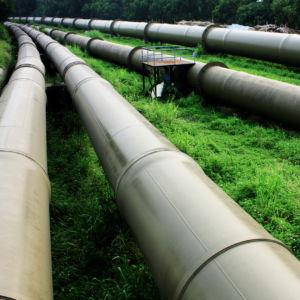Editor’s Note: For an alternative viewpoint, please see: Point: It’s Time for Clean Energy to Replace Fossil Fuels
The Paris climate agreement was signed less than a month ago, yet the United States is already one-third of the way to achieving the emissions reductions we committed to.
We pledged to cut greenhouse gas emissions 26 – 28 percent below 2005 levels by 2025, and emissions are down 9 percent compared to 2005 levels.
How did we do it? Largely through greater use of clean-burning natural gas. A recent update from the U.S. Energy Information Administration (EIA) reports that energy-related carbon dioxide emissions dropped 12 percent below 2005 levels last year, “mostly because of changes in the electric power sector” – specifically, “increased use of natural gas for electricity generation.” Energy-related carbon reductions contribute to overall carbon decreases that make the United States the world leader in emissions reductions.
Greater availability of natural gas has also driven down utility costs for families and businesses. Home heating costs dropped this past winter, and wholesale electricity prices fell 27 to 37 percent compared with 2014. Between that and low gasoline prices, EIA data indicate the average American household has saved almost $750 in annual energy costs compared to 2008. For manufacturers, industrial electricity costs are 30-50 percent lower than those of foreign competitors.
As the world’s leading producer of natural gas, the United States occupies an enviable position: We have a solution that cannot only help achieve climate goals but can actually lower utility costs.
Why then do some federal and state policymakers ignore the benefits of natural gas?
The Obama administration’s Clean Power Plan, which more than two dozen states are suing to prevent, largely skips over natural gas in favor of pushing more costly and intermittent sources like wind and solar. According to analysis by NERA Economic Consulting, implementing the plan could raise electricity rates by 10 to 30 percent, taking $64 billion to $79 billion out of household budgets.
The plan is on hold pending a stay by the Supreme Court, but some states are pursuing similarly convoluted paths. Northeastern residents pay 53 percent more than the national average for electricity, yet some states in the region seem to be going out of their way to reject natural gas infrastructure that could lower both costs and emissions.
In New York, Gov. Cuomo’s administration recently blocked a natural gas pipeline that could have created jobs and lowered the state’s utility costs. The same week, the governor announced $150 million in new subsidies for renewable energy and $57 million to “help low-income households reduce utility costs.”
With ample natural gas supplies a day’s drive away, Massachusetts has an obvious path toward its goal to cut carbon. Yet an editorial in the Boston Globe on the Commonwealth’s tortured plan focuses on importing hydropower from Canada – while admitting the “expensive infrastructure” and “destruction of forests” are drawbacks – and wind power – while conceding “it is not realistic to expect enough offshore wind to come online by 2020.”
Leaders in both states are laboring under the misconception that they must choose between natural gas and renewables like wind, solar and hydropower. Here’s an idea: all of the above. That used to be our national energy plan. In 2012, President Obama stated, “We’ve got to invest in a serious, sustained, all-of-the-above energy strategy that develops every resource available for the 21st century.”
Renewables and natural gas work together, with natural gas providing reliable power when the wind doesn’t blow and the sun doesn’t shine. Given the proven success of natural gas in reducing emissions, taking it out of the equation is unnecessary, not to mention potentially costly and unrealistic. According to the EIA, even under optimistic scenarios for renewable energy growth, oil and natural gas will still supply 60 percent of U.S. energy needs by 2040. The agency’s latest International Energy Outlook projects world energy consumption will increase 48 percent by 2040, largely due to expanding economic opportunities in developing nations, and 78 percent of global energy needs will be met by fossil fuels.
Improving health and opportunity for the 1.2 billion people around the world who lack access to electricity requires a mix of energy sources. The stakes in the U.S. are different, but the solution is the same. A diverse blend of energy sources, including oil and natural gas, is the best way to continue environmental progress without risking energy security, economic growth and consumer savings.

